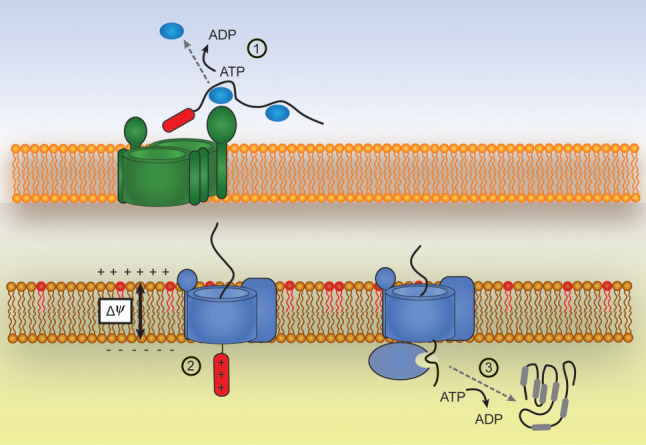Figure 4.

Energy inputs during mitochondrial protein import. The translocation of proteins across multiple lipid bilayer membranes, as is the case during mitochondrial import, requires energy inputs at various stages. (1) In order to pass across the outer mitochondrial membrane proteins often need to be maintained in an unfolded conformation by cytosolic chaperones such as Hsp70 and Hsp90. The first energy input often comes when these chaperones are released from the unfolded precursor via ATP hydrolysis at the outer surface of TOM. (2) A second energy input is required for initial translocation across the inner mitochondrial membrane. An intact membrane potential generated by proton pumping respiratory complexes is required for the translocation of positively charged MTS signals. (3) Further ATP hydrolysis steps are required for the further translocation of downstream protein segments into the matrix via the PAM motor. A number of IMS proteins show no dependence on membrane potential or ATP hydrolysis which leads to intriguing questions about the energy requirements for the outer membrane translocation of these proteins.
